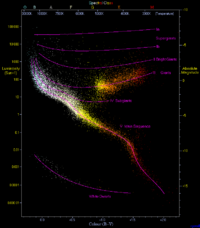
Photo from wikipedia
Plastids are one of the main distinguishing characteristics of the plant cell. The plastid genome (plastome) of most autotrophic seed plants possesses a highly conserved quadripartite structure containing a large… Click to show full abstract
Plastids are one of the main distinguishing characteristics of the plant cell. The plastid genome (plastome) of most autotrophic seed plants possesses a highly conserved quadripartite structure containing a large single-copy (LSC) and a small single-copy (SSC) region separated by two copies of the inverted repeat (termed as IRA and IRB). The IRs have been inferred to stabilize the plastid genome via homologous recombination-induced repair mechanisms. IR loss has been documented in seven autotrophic flowering plant lineages and two autotrophic gymnosperm lineages, and the plastomes of these species (with a few exceptions) are rearranged to a great extent. However, some plastomes containing normal IRs also show high structural variation. Therefore, the role of IRs in maintaining plastome stability is still controversial. In this study, we first integrated and compared genome structure and sequence evolution of representative plastomes of all nine reported IR-lacking lineages and those of their closest relative(s) with canonical inverted repeats (CRCIRs for short) to explore the role of the IR in maintaining plastome structural stability and sequence evolution. We found the plastomes of most IR-lacking lineages have experienced significant structural rearrangement, gene loss and duplication, accumulation of novel small repeats, and acceleration of synonymous substitution compared with those of their CRCIRs. However, the IR-lacking plastomes show similar structural variation and sequence evolution rate, and even less rearrangement distance, dispersed repeat number, tandem repeat number, indels frequency and GC3 content than those of IR-present plastomes with variation in Geraniaceae. We argue that IR loss is not a driver of these changes but is instead itself a consequence of other processes that more broadly shape both structural and sequence-level plastome evolution.
Journal Title: Frontiers in Plant Science
Year Published: 2022
Link to full text (if available)
Share on Social Media: Sign Up to like & get
recommendations!